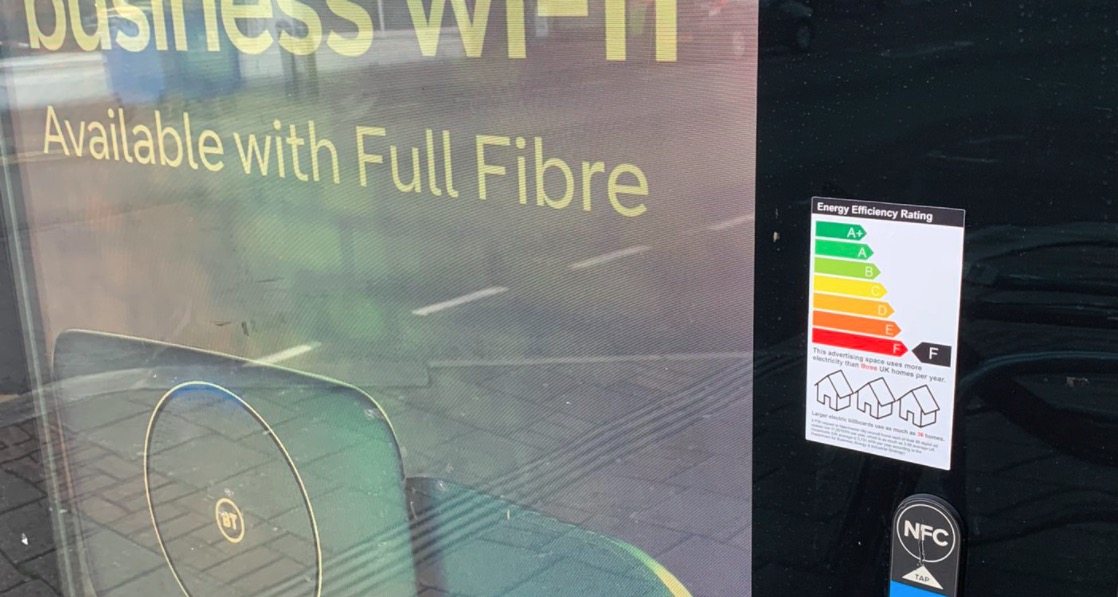
UK Activist Slapping Official-Looking Energy Use Stickers On Digital Posters To Shame Media Owners
September 6, 2022 by Dave Haynes
Energy shortages have forced prices up – way, way up soon in the UK – and prompted usage restrictions in some countries for things like digital advertising displays. It’s also started, or more likely heightened what’s already been happening, efforts by activists who are opposed to widespread advertising in city streets and public areas.
UK artist/activist Darren Cullen has done up stickers to be slapped on digital advertising totems in that country that look official and point out that the screens are energy hogs. The energy efficiency rating sticker, which looks like the sort of thing a government department might issue, suggests a typical “street furniture” ad totem consumes the same amount of energy annually as three UK households.
This owes a lot to the screens needing to be super-bright to counteract the glare and heat build-up of direct sunlight between dawn and dusk.
This is an ad totem in Cardiff, Wales that has had a sticker applied by Cullen or perhaps a supporter.
Good to see another one of these @darren_cullen stickers on City Road, advising the public of how inefficient electronic advertising hoardings are. In the midst of an energy crisis, should this be the priority‽ #Cardiff #Roath #Plasnewydd#AdvetisingShitsInYourHead pic.twitter.com/uL2eOZguB1
— @AdblockCardiff (@adblockcardiff) September 6, 2022
Normally, I suspect these sorts of anti-advertising efforts have more to do with people just not liking how digital posters get in the way on sidewalks and how larger displays impact the look and feel of neighborhoods. But the energy crisis brought on by Russia’s invasion of Ukraine has heightened awareness of energy issues and will likely exacerbate feelings about ad displays many will regard as serving no useful purpose, while running on increasingly precious and scarce energy supplies.
The issue has not really hit North America because energy sources are different over here, but I suspect the executive teams at a whole bunch of media companies are talking about how they deal with all this, and perhaps get out in front of it with action plans.
It certainly makes the proposition of companies like Azumo – which has reflective display technology – more compelling. Azumo says its tech – a layer in the LCD “sandwich” of components – can reduce energy consumption by 10X. That would address future needs, in theory, but there are 1,000s and 1,000s of high-bright displays already in the field.
Sixteen:Nine’s German language content partner Invidis has written extensively about what it calls “green signage.” They’ve asked me if green signage is an issue in the US and Canada, and I’ve said it’s not exactly been a hot topic. But I could see that changing, and at minimum, it would be prudent for companies that market or use high-brightness outdoor displays to think through what they do, and perhaps talk about more than just brightness levels.



Nice post. I’m sitting on a call with ANSI working group on regulating new electric draws on the grid and infrastructure. At some point manufacturers might need to take the lead on this and have smart energy usage.